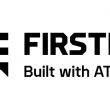The ultimate beta test
Less than six months after the launch of Virtual USA — an information-sharing initiative designed to help response agencies increase situational awareness — the U.S. Department of Homeland Security (DHS) scheduled a test of the second generation of the database-integration effort for June 1.
The June 1 exercise never happened, as reality intervened on April 20, when an explosion and fire on the Deepwater Horizon drilling rig licensed to British Petroleum resulted in 11 presumed deaths, 17 injuries and the leakage of crude oil and natural gas into the Gulf of Mexico. Before the primary leak was capped on July 15 — although reports of “seepage” elsewhere had surfaced as of press time — more than 100 million gallons of oil were estimated to have spewed into gulf.
Response to the event has involved myriad local, state and federal first-response units, BP and oil-industry experts, environmental agencies and others trying to resolve and assess the multifaceted damage created by the massive oil spill. Soon after the spill initiated, response groups asked if the latest Virtual USA software could be made available, so information about the spill could be shared quickly across jurisdictions and industry sectors.
Permission was granted, and the results have been eye-opening, said David Boyd, director of the DHS science and technology directorate’s command, control and interoperability division.
“There’s nothing that’s a better test than the real thing, so it was a perfect opportunity for us to turn it on,” Boyd said. “You always hate to put a positive twist on things that are so tragic, but this is an amazing opportunity to learn what’s possible and what you really need to be able to do.”
Key information shared through Virtual USA to the various response groups include updated weather, current flows in the Gulf of Mexico, location of cleanup crews, real-time mapping of the spill from BP, field reports, and data regarding the impact of the oil spill on the health of local residents and wildlife, and on the economy, particularly commercial fishing.
While much of the focus of Virtual USA to date has been preparation for scenario in which state and local emergency managers would be in charge, the oil spill is an indication that such information has value beyond traditional first-response entities — and that the Virtual USA model is flexible enough to address those needs.
“Historically, there hasn’t been a need for continuous exchanges of information,” Boyd said. “What’s happened in the oil spill is that, for the first time, the range of people who are involved and the range of agencies, organizations and sources of information is limited only by your imagination.
“In many cases — as in this one — it’s the environmental folks in the states who are playing the key role.”
To this extent, the experience has caused those associated with Virtual USA to rethink the role of the program in the future, as additional tools have been developed on a weekly basis in response to the oil spill.
“There is no artificial test that would give us the range that the real thing does,” Boyd said. “One of its positive effects is that it’s helping people understand that there’s more information out there than they ever realized.”
Another key lessons learned in the aftermath of the oil spill is that sharing information via Virtual USA is “a lot easier to do technically than anyone ever imagined,” Boyd said. The bigger challenge has been a philosophical one regarding information sharing, but there have been pleasant surprises on that front, as well — entities largely have been willing to let others access their data, he said.
“What we’re beginning to see now is the increasing development of a culture of sharing beginning to break down lots of these barriers,” Boyd said.
One reason for this is that the fundamental tenets of Virtual USA are geared to make the system friendly to those who have information. For instance, the data collector — be it a local county tax office or a statewide emergency-response office — gets to control the information by establishing rules regarding who is authorized to view it, so laws don’t have to be rewritten to permit sharing.
Just as important, Virtual USA does not require these data-collection entities to reformat their data or change existing operations, Boyd said. Meanwhile, Virtual USA allow those viewing the data to integrate it into their own familiar mapping and database systems.
“Nobody can afford to throw away what they have and start over. Whatever you designed has to start with what they have,” Boyd said. “What Virtual USA is aimed at doing is making it easy for them to exchange real-time information — no matter what form it comes in — so it can be seen inside the environment each state has.”
While the BP oil spill is not a typical first-responder event, the Virtual USA tools being developed promise to be useful to public safety into the future, said Charles Werner, fire chief in Charlottesville, Va., and chairman of the SAFECOM executive committee. Voice will continue to play a key role in public safety, but data, images and video can greatly enhance situational awareness and allow agencies to respond more efficiently, Werner said, citing the 2007 Minneapolis bridge collapse as an example.
“Grabbing the camera feed and putting it right to the responders makes a major difference to me,” Werner said. “Because, if I get a dispatch that one of my bridges collapses in town, the first thing I’m thinking is that a piece of the bridge collapsed; I’m not thinking that the whole thing just collapsed. But if I see it on video, then I’m saying, ‘OK, this is different.’ I’ve got to stop and call a whole lot more people.”
Dramatic images and video can paint an instant picture of a response situation, but data from myriad sources — such as gauges and sensors — can help responders act quickly to situations such as flooding threats, Werner said. The key is that response agencies do not simply need the raw data; rather they need tools that identify trends in a manner that enables officials to make informed decisions in a timely manner.
“You don’t want to see every sensor,” Werner said. “What you want is for it to show me and alert me when these gauges get to a certain level, so my EOCs and people who are working in these areas can be proactive. Before it actually gets to the flood stage, it’s telling you that it’s getting there, and it’s telling you how fast it’s rising, so you can tell, ‘OK, this is bad.'”
Boyd echoed this sentiment, citing the need for analytical tools and integrated mapping to enhance response officials’ decision-making in high-stress environments.
“You have to have the protocols to be able to manage it, because you are going to be overwhelmed [with information],” he said.
In addition to having access to information and the processes to manage it, another key component for public safety will be having networks that can support the bandwidth-intensive applications and content. Without the conduit to share the gathered data with those in the field, the value of the information is greatly limited.
“The question you want to ask is: How important is it that emergency managers have this information in a dire emergency?” Boyd said. “If you are the guy who is about to die, you want that information available to public safety, and you want it available now.”
To this end, Werner said that it is important that public safety has a reliable, dedicated broadband network on which data such as the information available via Virtual USA can be transmitted from command centers to first responders in the field and vice versa. Reallocation of the 700 MHz D Block — currently slated for a commercial auction next year — to public safety could help ensure that such a broadband network can meet the future data needs of first responders.
“Short-sighted movement forward with insufficient spectrum is going to put a fence around all of that,” Werner said. It’s going to say, ‘You could have, but you can’t.'”
Key dates in the development of Virtual USA
November 2007
State of Alabama DHS launches Virtual Alabama to provide data and query tools integrated into a mapping interface powered by Google Earth.
February 2009
Seven states (Alabama, Florida, Georgia, Louisiana, Mississippi, Texas and Virginia) partner in the first regional information-sharing pilot.
September 2009
First states (Alaska, Idaho, Montana, Oregon and Washington) partner on the second regional information-sharing pilot.
December 2009
DHS Secretary Janet Napolitano officially launches the Virtual USA initiative.
April 2010
Massive oil spill in the Gulf of Mexico causes results in the second generation of Virtual USA to be activated, even though the new capabilities were not scheduled to be tested until June 1.
Related Stories
















